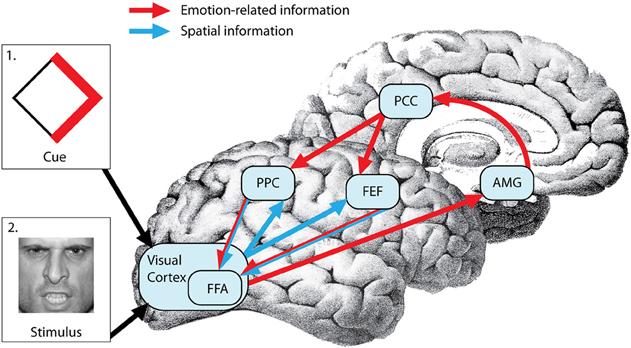
Clinically, anxiety is characterized by anticipation of future threats. However, our understanding of the neurobiological and psychological mechanisms that give rise to and maintain anxiety symptoms is based, not on anticipatory, but on behavioral or neural response to threatening stimuli. In our lab, we examine neural mechanisms of threat anticipation and its impact on attention and perception in anxiety.
The ability to actively locate potential threatening and rewarding stimuli in our environment is highly adaptive. Hence, a rattlesnake coiled on a desert trail is detected much faster than a stone nearby. Faster and more accurate detection of threatening stimuli has been attributed to “automatic” processing of threatening stimuli after they are presented. Much of the clinical and affective neuroscience literature has focused on involuntary or “automatic” processing of emotional stimuli but it is equally adaptive for our brain to anticipate and prepare for probable threats or rewards before they actually happen.
In our day-to-day life, we frequently use prior experience in a “top-down” manner to detect existing threats. For example, while driving on the highway after a blizzard, it is highly likely you will rely on your past knowledge of this context or signs warning of icy roads, to anticipate and detect the icy patch on the road, rather than relying solely on bottom-up capture by an icy patch. In fact, researchers have argued that our brains are “prediction machines” that allow us to anticipate forthcoming stimuli and beneficial responses based on our past knowledge. Hence research in our lab focuses on how prior knowledge and learning is utilized by the brain to guide perception and attention to threats and rewards.
While accurate predictions of threat help us prepare better, exaggerated predictions regarding future threats are a defining feature of anxiety. Hence our lab is trying to understand the computational and neural mechanisms by which anticipatory factors in perception of and attention to threat in anxiety. The ultimate goal of our research is to build more comprehensive and ecologically pertinent models in which prior learning, experiences and expectations factor into explaining threat perception in normal individuals and anxiety.

